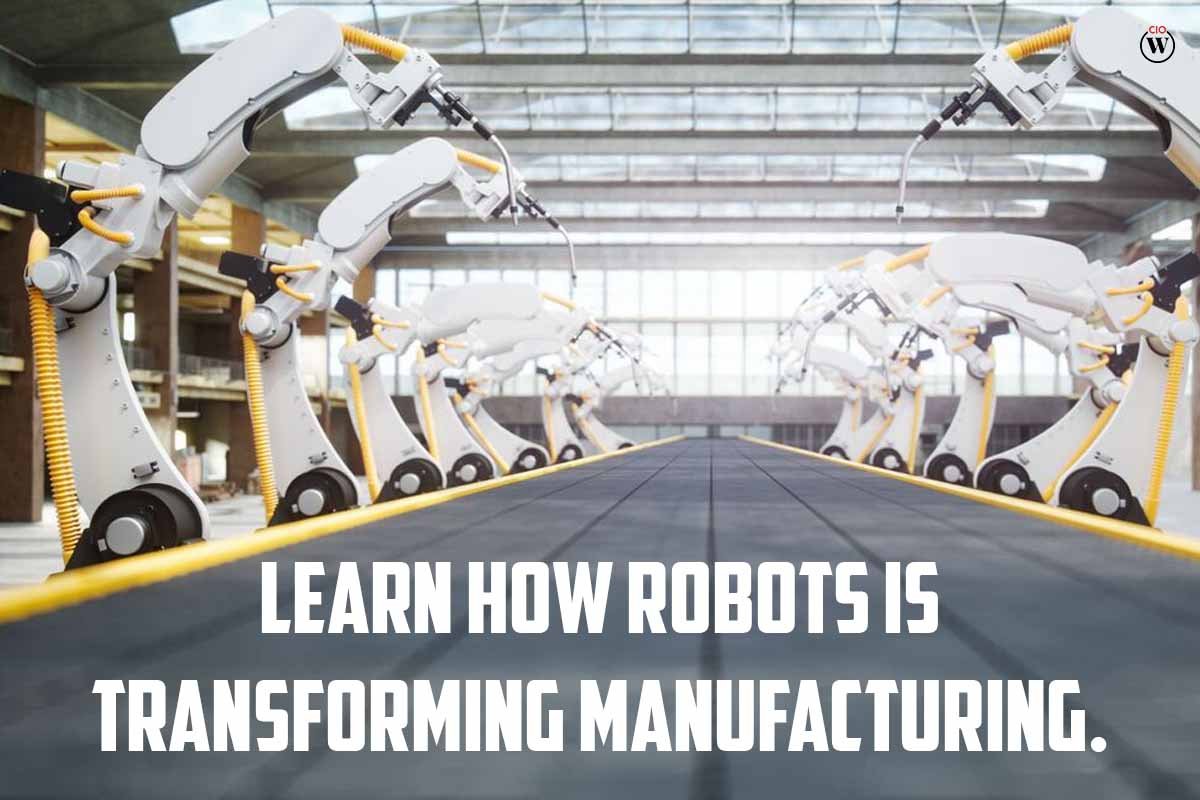Industry 4.0 has been hailed as a game-changer in the manufacturing sector, allowing companies to take use of cutting-edge resources and technology at every stage of the product’s lifespan. Top 10 Manufacturing Trends 2023, Industry 4.0 has unquestionably helped businesses boost transparency, save costs, speed up manufacturing, and provide superior assistance to customers.
However, we must now shift our focus from Industry 4.0 to the next Industry 5.0. The fourth industrial revolution centered on improving efficiency in the manufacturing process via the use of technology; the fifth, on the other hand, is all about the cooperation between people and intelligent machines. Some say that the arrival of Industry 5.0 is imminent, while others insist that it has already here.
There is no denying that manufacturers, no matter whichever side of the debate they find themselves on, need to continually accept change in order to keep up with the competition and increase their market share. Top 10 Manufacturing Trends 2023, Those who want to do more than merely make it in today’s competitive business environment must adopt cutting-edge practices.
Here are Top 10 Manufacturing Trends 2023;
1. IoT is (Still) THE Big Thing
It’s no surprise that the Internet of Things (IoT) is once again at the top of trend lists due to its versatility and creativity in the industrial sector, despite the fact that it is becoming more mainstream technology.
The Internet of Things (IoT) allows for the interconnection of diverse devices within a preexisting internet infrastructure, allowing manufacturers to make data-driven, strategic decisions in real time and thus accomplish a wide range of objectives, such as lowering production costs, increasing productivity, boosting worker safety, and developing new products.

The MPI Group found that 31% of manufacturing processes are already using smart devices and embedded intelligence. In addition, 34% of manufacturers want to implement IoT technology into their operations, and 32% intend to integrate IoT technology into their wares.
2. The use of Predictive Maintenance to Maintain Productivity
Predictive maintenance is important because the costs associated with a breakdown of essential machinery are high for firms. Nearly all businesses (98%) estimate that each hour of downtime costs more than $100,000.
In excess of $100,000 is lost in only one hour of downtime, according to 98% of companies surveyed.
Therefore, it is critical for manufacturers to keep all equipment operating at peak efficiency, and many have turned to predictive analytics and predictive maintenance to achieve this goal.
Predictive maintenance has been shown to significantly decrease unscheduled downtime and significantly increase the lifespan of machines. Top 10 Manufacturing Trends 2023, Using predictive analytics, manufacturers may automate the data collecting process using IoT devices and track equipment performance using any number of performance measures.
As a result, manufacturers can better forecast when systems will break down and implement preventative maintenance to save time, money, and resources. There is no loss of output because of equipment shutdown since monitoring checks may be performed while machines are in operation.
3. Manufacturers Figure Out Post-Pandemic Planning
As a result of COVID-19, many goods and the firms who made them are no longer available. Manufacturers who made it through the epidemic have had to start again in terms of strategy. Top 10 Manufacturing Trends 2023, According to Gartner, there are three stages that make up their framework, which they call “the Reset:”
4. Rethinking Enterprise Resource Planning
Due to its capacity to automate routine tasks, provide precise, up-to-the-moment data, and save costs, enterprise resource planning (ERP) planning systems have become ubiquitous in the industrial sector. COVID-19 has, however, significantly altered the ERP systems’ interaction with and use by manufacturers.
Rather of trying to have ERP handle everything, more and more manufacturers are piling on top of ERP with agile apps. For instance, many of Hitachi Solutions’ manufacturing customers have asked us to develop Power Apps for things like worker safety apps and back-to-work systems; these short-term solutions sit atop customers’ ERP systems and help them adjust to the new normal of COVID-19 without requiring a lengthy R&D process. Top 10 Manufacturing Trends 2023,
5. Manufacturers Gain Greater Visibility into Big Data
As the Internet of Things (IoT) continues to grow in popularity and as more focus is placed on predictive maintenance, it stands to reason that big data will become an even more pervasive industry trend.

As manufacturers work to reevaluate their forecasting and planning models, they will find that the ability to collect data from a wide variety of sources, coupled with the growing power of cloud computing, allows them to slice and dice data in ways that give them a complete picture of their business.
6. Virtual Reality and Augmented Reality Facilitate a Touchless Service Model
As expected, COVID-19 was a big hindrance for manufacturing businesses’ field service departments, making it impossible for specialists to go to work sites to install equipment or administer repairs. Technicians may now provide remote support by providing consumers with AR or VR-enabled gadgets and guiding them through simple troubleshooting and fixes.
7. 3D Printing Makes Production Faster & Cheaper
3D printing has been a mainstay of additive manufacturing for nearly 40 years, even if to the average public it may look like something out of a science fiction book. Modern businesses rely on 3D printing for a variety of reasons, including prototyping (a very affordable method for product designers to test and debug new goods) and on-demand production (rather than mass production and storage).
8. Manufacturers Reevaluate Shoring & Sourcing
Reshoring, the process of returning production of previously exported products or materials to the United States, was already on its way to becoming widespread among American businesses before the occurrence of COVID-19. Top 10 Manufacturing Trends 2023, As many as 749,000 jobs may have been relocated to the United States between 2010 and 2018 as a direct consequence of reshoring, according to some estimates.
9. Enhanced Productivity Driven by Artificial Intelligence, ML, and Analytical Technologies
More than 80,000 sensors collect information on the operation of machinery and equipment on a typical oil rig. These sensors monitor a wide range of process parameters, such as temperature, pressure, and flow rate. Data may be utilized to do remote monitoring and target production.
However, on a daily basis, those many sensors generate almost two terabytes of data, which is much too much for traditional data analysis techniques to handle. Top 10 Manufacturing Trends 2023, This helps to clarify why there has been such a surge in the use of sophisticated analytics techniques that rely on artificial intelligence and machine learning.
10. Supply Chain Restructuring would alter the locations of manufacturing
Industry 4.0 is gaining momentum because of a growing requirement for resilience, and this need is also prompting significant changes in sourcing and offshoring, particularly in North America and Europe.

Though outsourcing and lean supply chain activities were propelled by globalization and the never-ending pursuit of more cost efficiency for many decades, the pendulum is now swinging in the other way for a variety of reasons, Covid-19 disruptions being just one of them. Top 10 Manufacturing Trends 2023, Although the reshoring movement had its beginnings in 2010, its momentum has picked up considerably in the previous 12 months.









